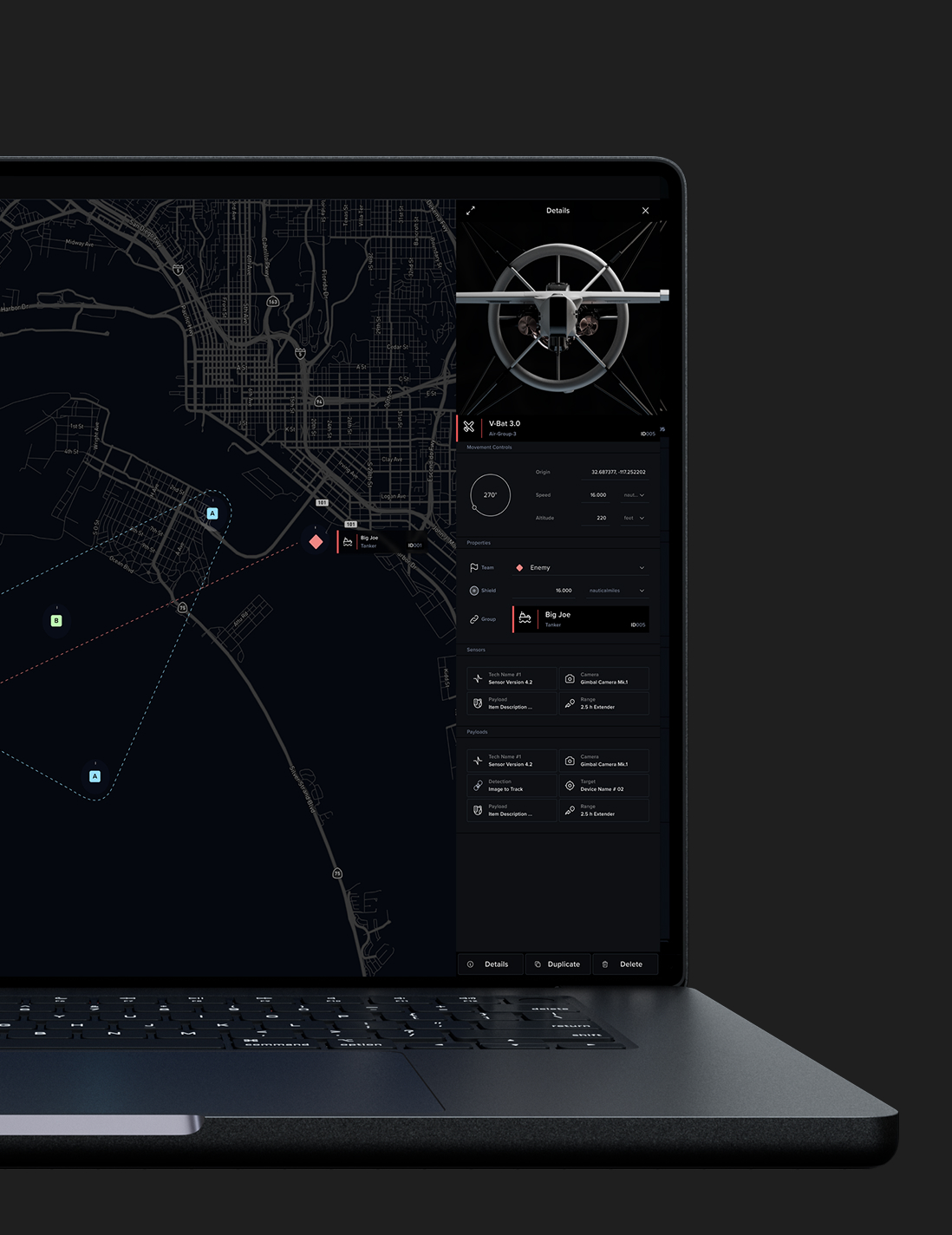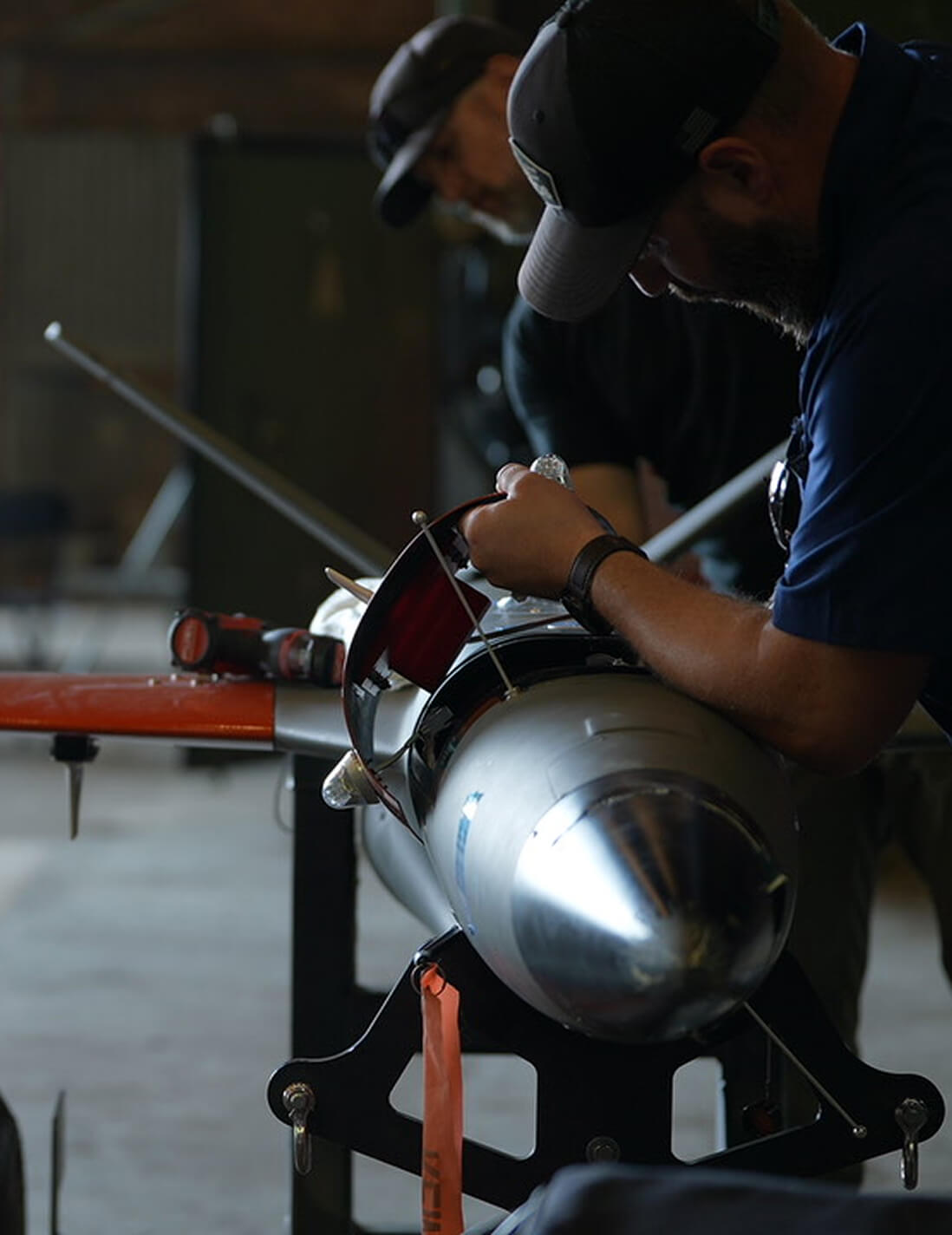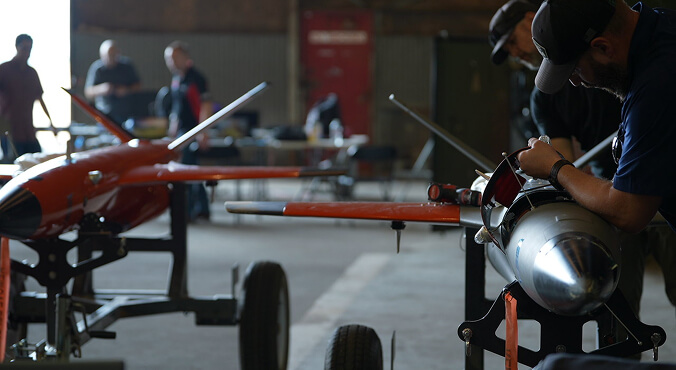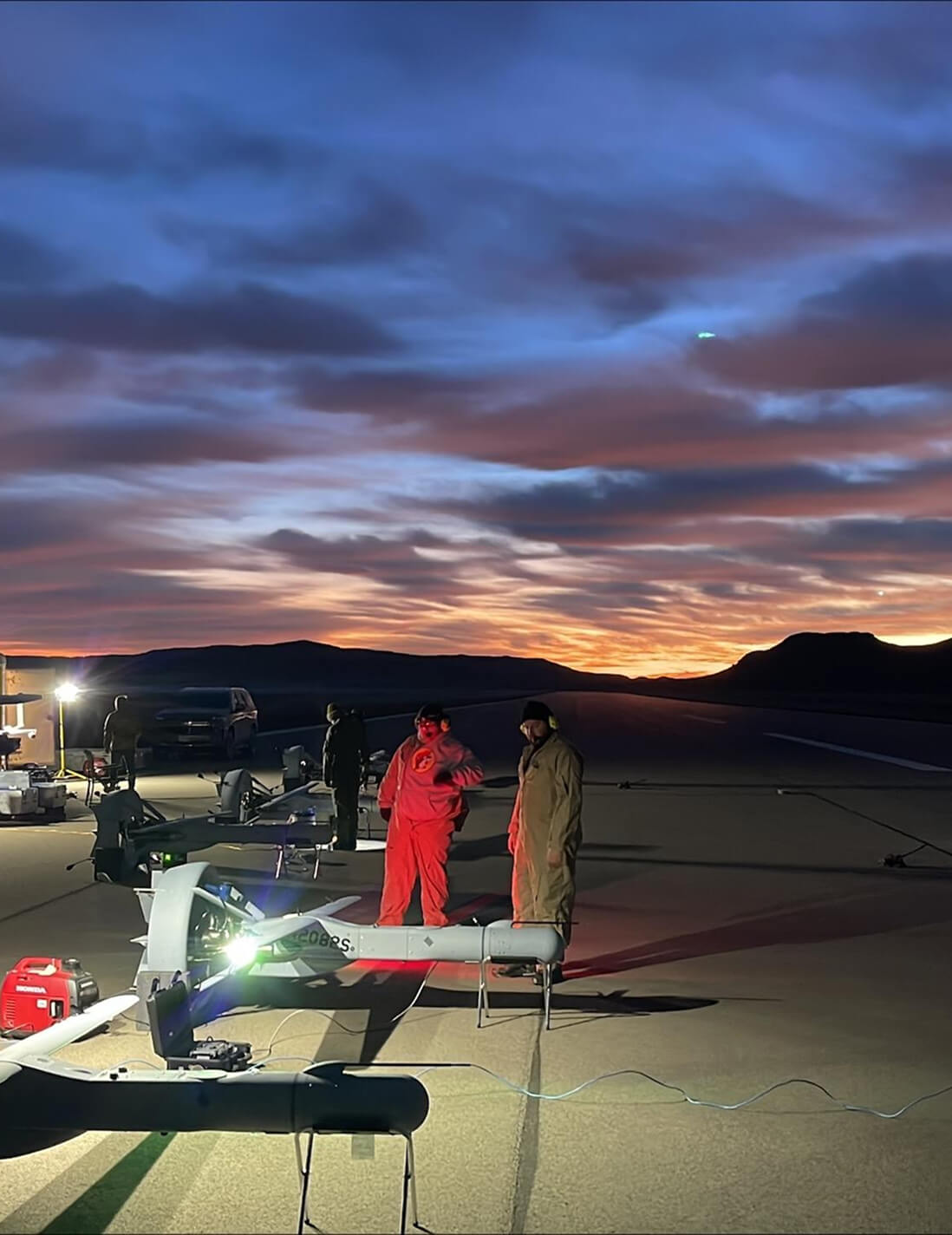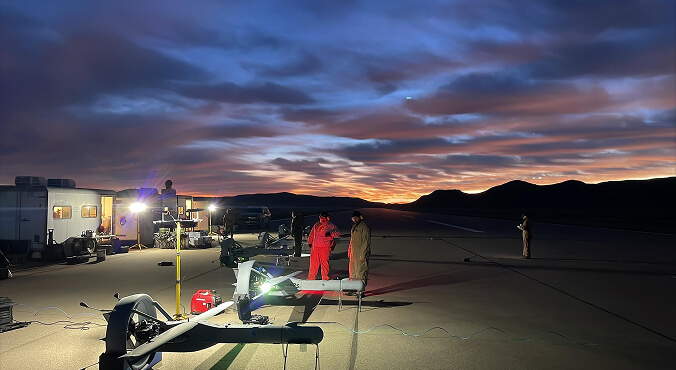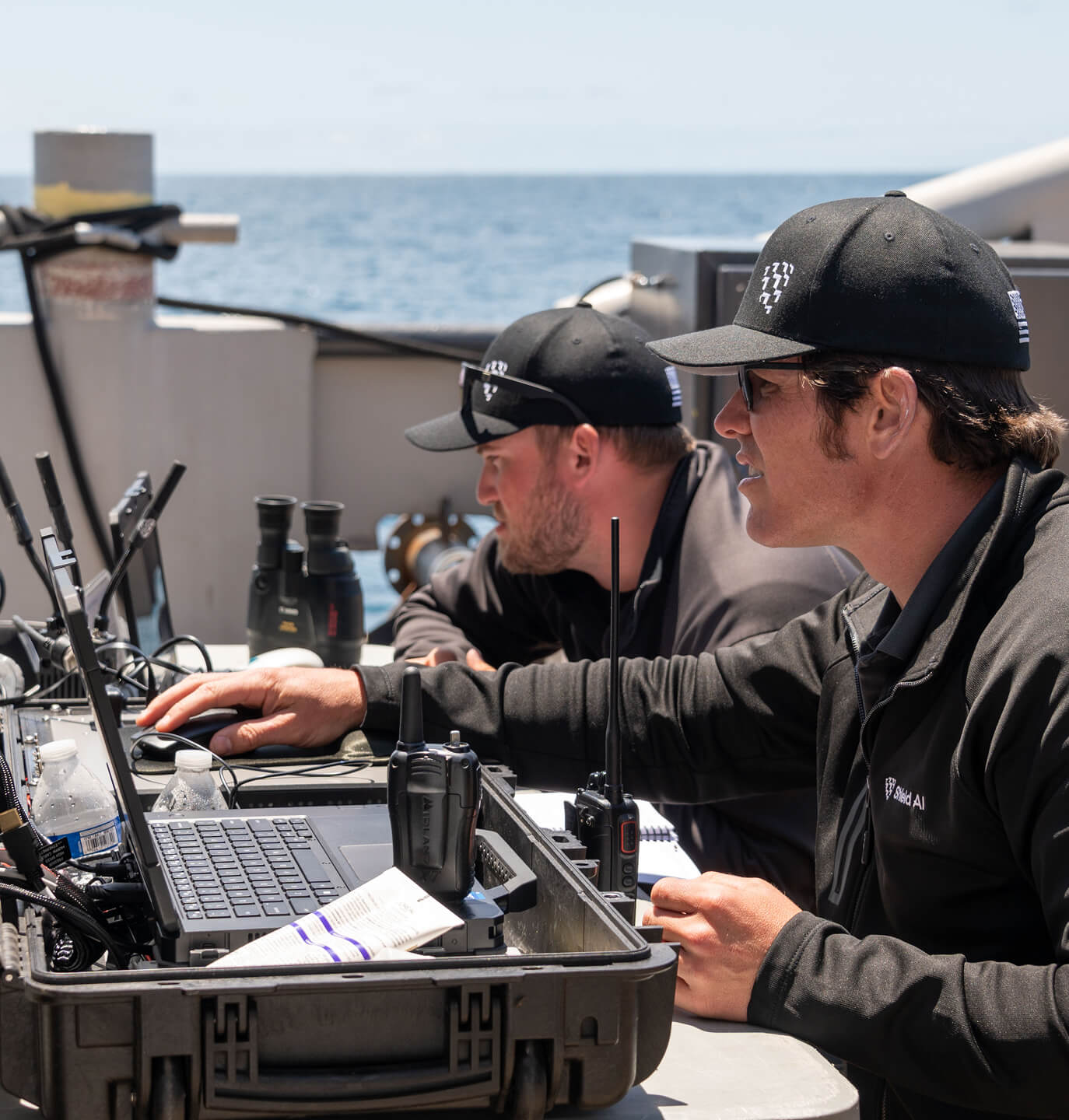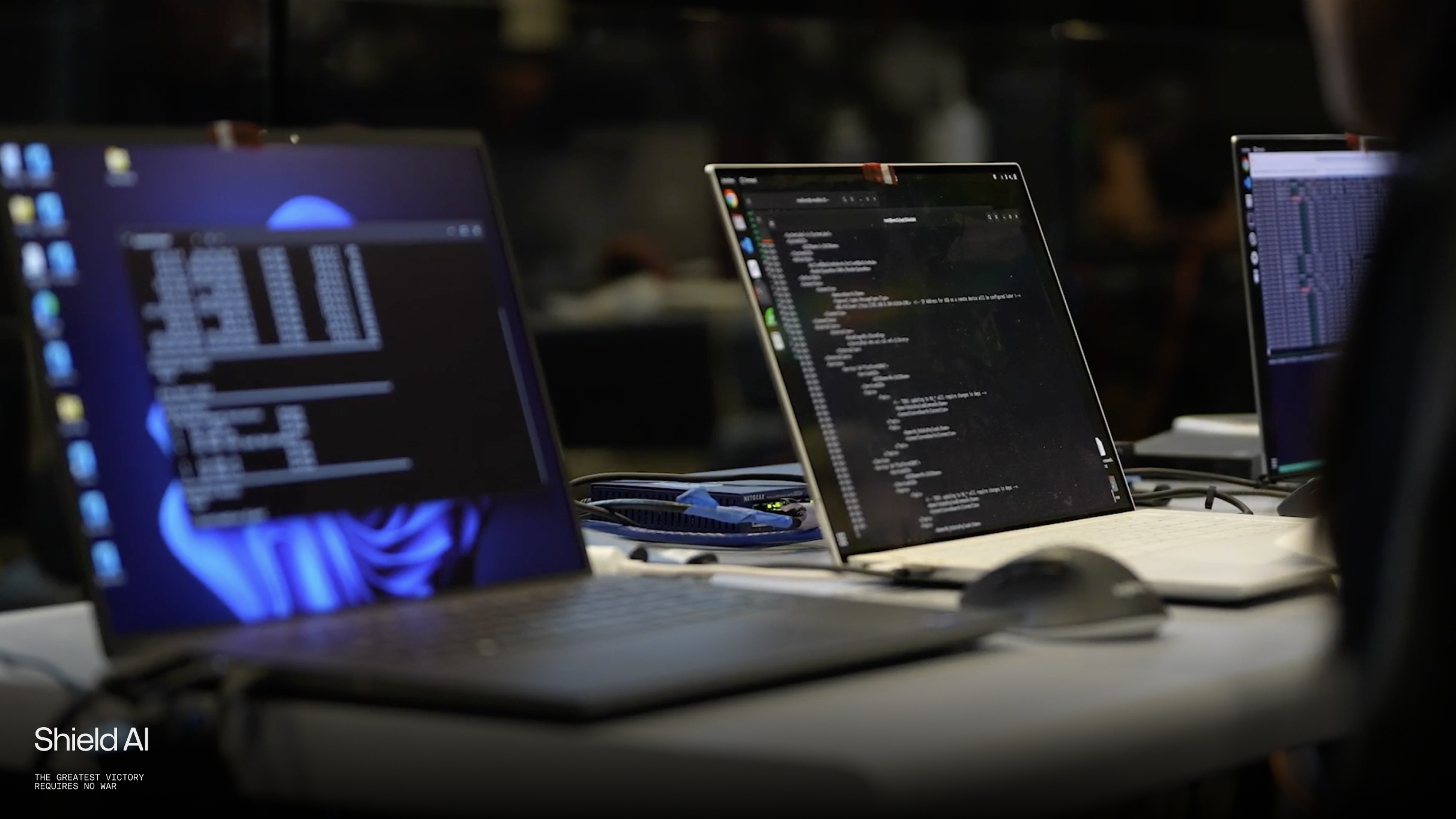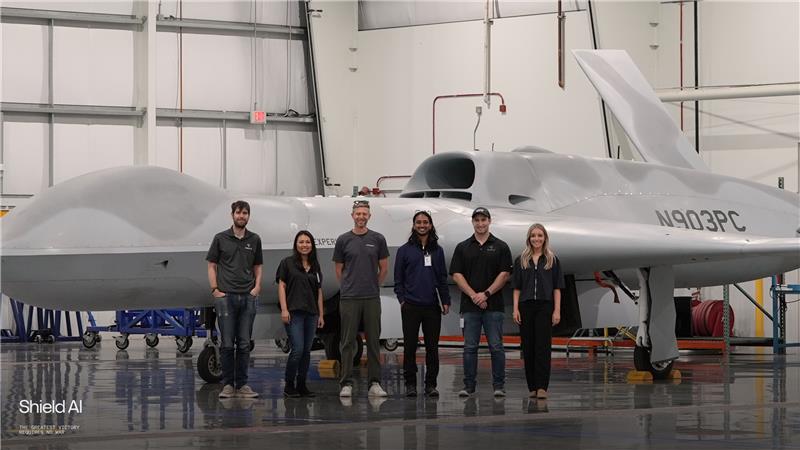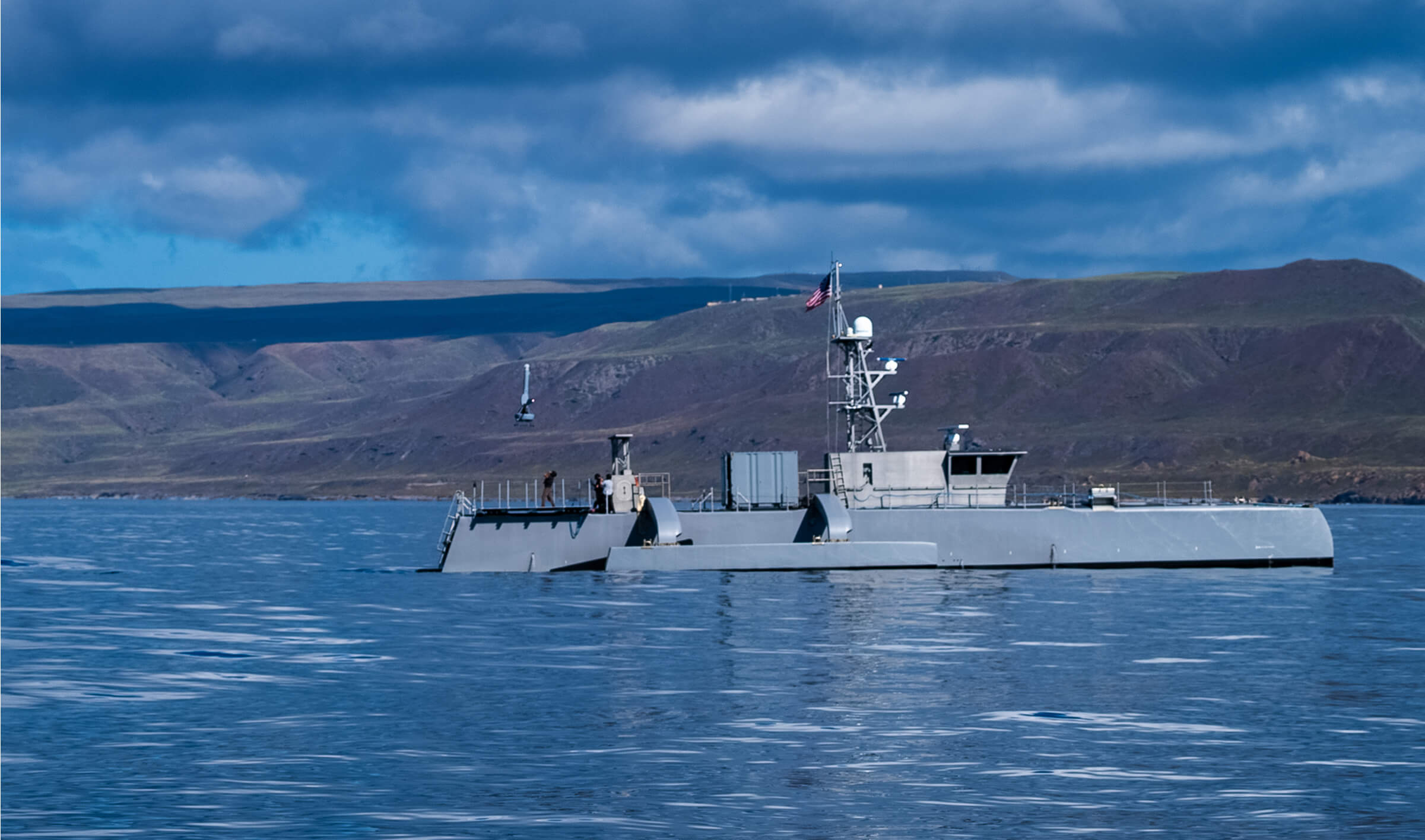[September 16, 2025]
Autonomy for the World: MQ-20 Avenger

Twelve weeks. No vehicle dynamics simulator. One successful flight campaign. In an industry where integration often drags on for a year or more, we set out to prove that deploying cutting-edge autonomy can happen on a radically shorter timeline. Our challenge: integrate Hivemind autonomy onto General Atomics’ (GA) MQ-20 Avenger in just mere weeks, faster than most teams plan a kickoff meeting.
Starting the day before Thanksgiving 2024, my team and I found ourselves locked in a sprint—racing holidays and red tape—to prove what happens when the right software, partners, and urgency align. We headed to the labs, working rigorously to tune and validate Hivemind on the MQ-20 without a vehicle dynamics simulation in advance. In a series of two live flight demonstrations, our hard work came to fruition as Hivemind Pilot integrated seamlessly with GA’s hardware to demonstrate advanced autonomous behaviors.
The live flight tests demonstrated not only technical capability, but a new standard for how autonomy can be fielded quickly, safely, and at scale. This is how we at Shield AI redefined what is possible, and why the new pace of autonomy integration should make even the bold take notice.
This case study outlines how Shield AI:
- Leveraged Shield AI’s platform-agnostic software suite to operationalize mission autonomy on the MQ-20 Avenger
- Rapidly integrated Hivemind onto the MQ-20 Avenger in twelve weeks using the Autonomy Government Reference Architecture (A-GRA)
- Executed real-world flights on the MQ-20 Avenger, demonstrating multi-agent coordination capabilities
- Proved that rapid autonomy integration is achievable and repeatable at scale
Open Architecture, Rapid Deployment
At the core of this integration is Hivemind, Shield AI’s platform-agnostic autonomy stack, designed to enable unmanned platforms to carry out sophisticated missions in GPS and communications denied or degraded environments. Engineered for modular integration and deployment across multiple platforms, it empowers partners to rapidly develop, test, and operationalize mission autonomy at a significantly lower cost.
Integrating Software at Speed: Navigating a Compressed Timeline
This effort kicked off with twelve weeks to first flight. For Department of Defense programs, that schedule would sound nearly impossible. Our disciplined, simulation-driven approach allowed us to break down integration into fast, testable steps. Every week, we were building, validating, and refining, always keeping safety at the forefront.
Shield AI brings technical experience to each collaboration, allowing for rapid integration of Hivemind with other programs. Bringing their own past integration experience, our lean team—Willy Logan, Madison Blake, Bryan Doyle, Alysha Singh, Ryan Shaffar, Dhanush Karthikeyan, and Bernice Sebring—knows the work required to tailor our solution to the dynamics of the aircraft. Our solution considers individualized factors, such as an aircraft’s speed, acceleration, and turning patterns, which then becomes factored into the decision making of the pilot. We have refined how that tuning is done, allowing for rapid integration onto brand new platforms.
In the lab, our team recognized this advantage in making our software tailorable to the platform. Engineering Manager, Alysha Singh noted, “A large factor in our success was making the autonomy interface to the platform simple and the internal parameters of the algorithms highly configurable. This enabled the team to quickly tune and iterate based on platform performance in the lab.” Without our ability to rapidly integrate, our timeline may not have been possible.
Similarly, this expertise enables us to identify the testing that needs to be completed to get to flight safely. We validate all flight safety functions such as geofencing, airspeed, and altitude prior to flight in software-in-the-loop and hardware-in-the-loop environments. With this expertise, we are able to integrate rapidly with any platform.
GA could not provide a vehicle dynamics simulator prior to integration due to government safety restrictions. To prepare, we developed our solution using a stand-in simulator with different dynamics. Even so, within just one day in the GA lab, we successfully integrated onto the MQ-20 Avenger and refined our solution using the actual dynamics simulator—despite having had no access to one in advance.
What made this schedule possible was not just effort, but a commitment to real, honest simulation; we used every lab and test run to learn and iterate. The result was a flight-ready system on time and on target.
Our speed and success would not have been possible without true partnership. Working closely with the GA team meant frequent joint technical stand-ups and shared lab time. We solved problems shoulder to shoulder, approaching every challenge as a single, integrated team. A major enabler was the ability to remotely toggle between autonomy stacks mid-mission which allowed us to validate Hivemind on MQ-20 flights without interrupting the GA test program.
The entire experience reinforced that partnership is more than dividing tasks. It means creating shared goals, solving issues in real time, and always putting results first. The success of our team in the lab impressed GA, so much so that they invited us to demonstrate our capabilities live in an Orange Flag event.
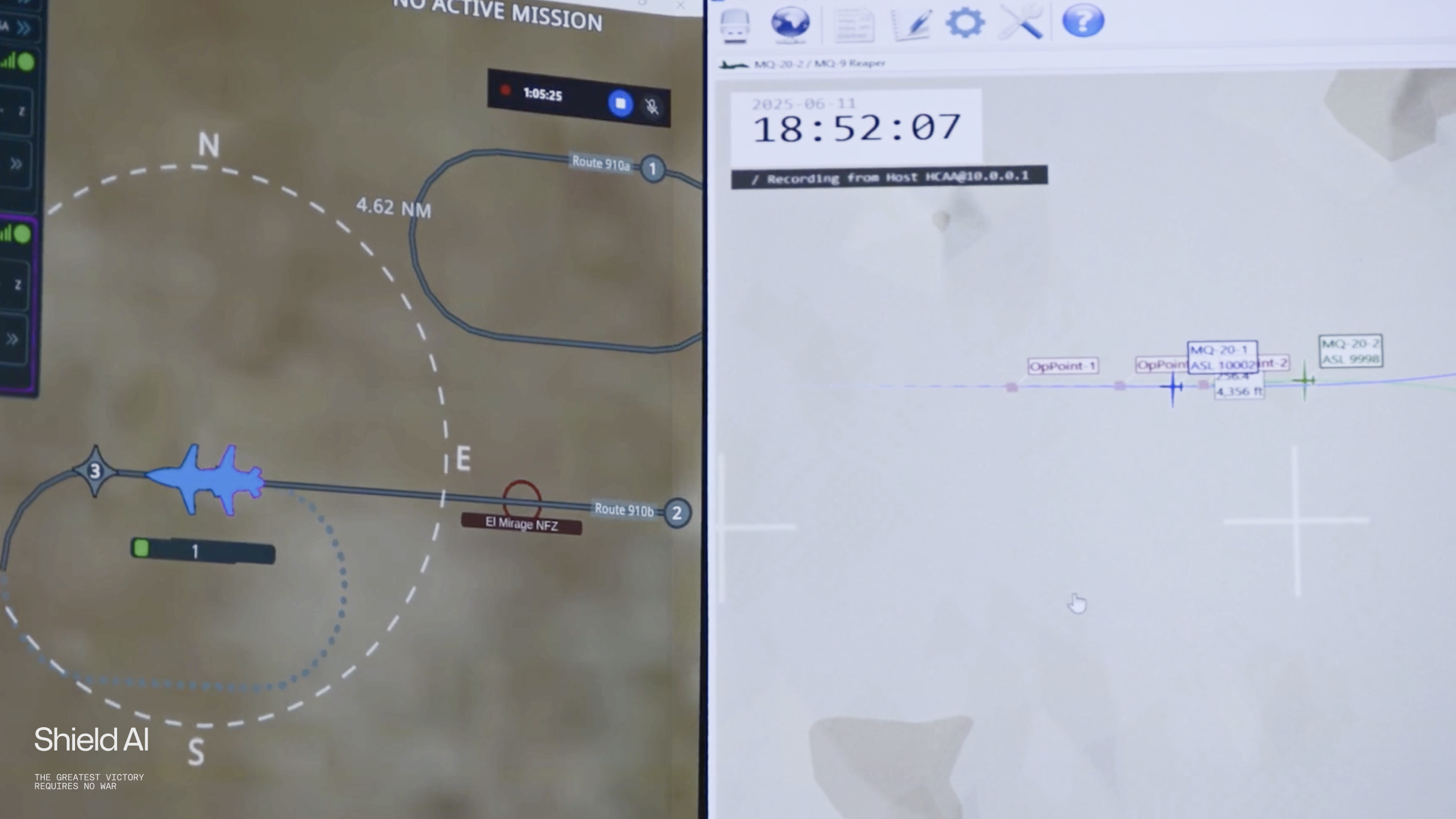
Taking Flight: MQ-20 Powered by Hivemind
Flight Test 1
Our first demonstration was during Orange Flag 25-1 in February 2025.
Hivemind successfully showcased advanced implementation of platform control and administrative capabilities during live ground and flight tests, including an A-GRA compliant Command and Control (C2) interface, Heading/Speed/Altitude (HSA) control, and fly-to functionality enabling waypoint-based navigation. The system also demonstrated geozone avoidance to ensure adherence to operational boundaries, allowing for flexible and responsive mission execution.
Flight Test 2
Four months later, we moved beyond just autonomy to collaborative autonomy. A live MQ-20 flew alongside its digital twin, performing advanced maneuvers and a 180-degree offset combat air patrol (CAP), fully autonomously in a live-virtual-construction (LVC) environment. This was the leap from “can we fly safely” to “can we fight as a team.”
The system successfully demonstrated key multi-agent coordination capabilities. Hivemind was able to leverage geometric strategies to enable aggregation behaviors, due to a platform limitation of speed control, guiding agents to converge into a 1-nautical-mile trail formation while loitering. The agents maintained the trail formation during navigation to fly-to points and dynamically adapted to geozone avoidance constraints, autonomously steering clear of designated no-fly areas without disrupting formation. The system also executed a 180-degree offset CAP, using geometry-driven decision-making to autonomously position agents for optimal coverage.
We proved that quick software spirals and engineering adaptations could scale autonomy from one jet to many. Hivemind’s success operating during the LVC set the stage for future opportunities to operate multiple live aircraft, while also instilling confidence in pilots that aggregation can be achieved safely and reliably. Across both We proved that quick software spirals and engineering adaptations could scale autonomy from one jet to many. Hivemind’s success operating during the LVC set the stage for future opportunities to operate multiple live aircraft, while also instilling confidence in pilots that aggregation can be achieved safely and reliably. Across both flight tests, pilot trust grew steadily as they observed the autonomy consistently operate within its safety boundaries.
Looking Forward: Autonomy at Scale
As we continue to enhance Hivemind’s autonomous capabilities on various platforms and refine further behaviors, our collaboration with GA represents a monumental step in both advancing our products and learning lessons to use down the road. Within just twelve weeks, we were able to accomplish what some deemed impossible. Rapid integration is possible. The keys are modular, open-standard software, disciplined simulation, and true joint teamwork. This deployment speed is doable, safe, and repeatable on more platforms than just the MQ-20.
As we look to the future, my focus is on expanding to multi-ship live flights, advancing manned-unmanned teaming, and ensuring that any new platform can field Hivemind in weeks. If the government and industry want to further accelerate innovation timelines, providing an advanced simulator would only allow us to work faster and smarter.
This journey is far from over. If there is one lesson we can all share, it is this: bold timelines are achievable when you build the right technology, choose the right partners, and work as one team. At Shield AI, we’re not just advancing autonomy; we’re revolutionizing how it is deployed across platforms.
About the Author
Abigail Francis is a Technical Program Manager at Shield AI, driving cross-functional execution to deliver high-impact engineering outcomes on time, on mission, and at quality. With nearly a decade of experience working in engineering, Abigail brings with her technical expertise crucial to leading her team to the end-product and making strategic decisions. She holds a Bachelor of Science in Electrical and Computer Engineering from the University of Arizona, as well as a Master of Science in Software Engineering from the University of Texas at Austin. In her free time, Abigail enjoys reading, running, surfing, and anything outdoors.
This blog is part of a series of case studies highlighting the unique challenges and accomplishments of integrating Hivemind on each platform it has flown. Each installment delves into the technical innovations, collaborative efforts, and mission successes that define our work and our teams.
